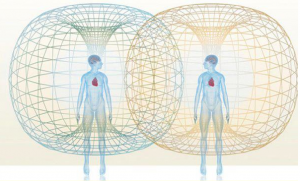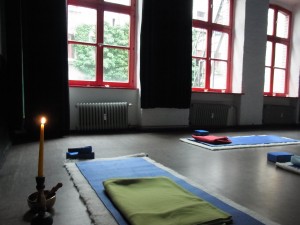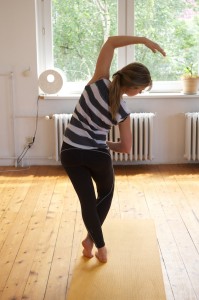The classes we offer in Kreuzberg are as varied as the people who attend them. We have artists, activists, doctors, parents and business people. We offer Classical yoga, Hatha, Vinyasa Flow and Restorative yoga to make sure that there is something for everybody. And because we offer affordable classes in English and Spanish, we often attract people from around the world who are starting a new life here in Berlin.
Recently, we did an interview with one of our longest attending students. Shaleah Dawnyel is a small business coach in Berlin who focuses her work on helping freelancers and entrepreneurs to move their businesses forward. She is also one of the biggest supporters of our yoga school as she is constantly sending overworked and overstressed people our way. So, we took some time to ask her why.
What made you start coming to English Yoga Berlin?
The stress of my international move is what originally prompted me to come to the studio. I was looking for some way to handle my anxiety about being an expat-freelancer who was starting over from scratch here in Berlin. But when I moved from LA, I had the wrong idea about yoga. I thought mediation was a bunch of crap and therefore I thought yoga was too. It’s a big industry where I come from where people are often trying to prove how holy, bendy and yoga trendy fashion conscious they are. When I discovered English Yoga Berlin, it totally changed my perspective.
What’s so different about our yoga classes?
EYB classes are always so nurturing, supportive and challenging. They aren’t filled with esoteric babble but rather a lot of practical wisdom. And the yoga teachers are not only knowledgeable but down to earth. They teach me to explore my personal limits and then to support myself once I have found them. This is a hard thing in life and business: knowing when to push and when to accept things as they are. The difference between go time and wait time is illustrated so clearly every day on the mat and it has helped me enormously to be able to identify what time it is in this big life transition.
How has your yoga practice helped you in your work?
I have learned to breathe through discomfort. This has helped me during difficult meetings. I have learned that every day I have a different capacity for things. This has helped me with effective time management. Yoga Nidra shows you how to visualize things in a relaxed state. This has taught me to achieve my goals with less striving effort. By learning to respect my own limits, I have actually become a better business person. I don’t ignore my instincts like I used to, but instead respect them as I know they are giving me valuable information about the current situation as it is unfolding. I don’t take situations with clients personally anymore because I have the benefit of the kind of perspective that regular yoga practice creates. When you become an audience to your life and work, you become exponentially more effective in everything you do.
What advice would you give freelancers and entrepreneurs who are thinking about starting yoga?
Do it. Seriously. If I was to give you just a short list of all the potential benefits of regular yoga practice it would include: more restful sleep, more energy, better focus, less stress and relief of back pain etc. In addition to this, I have noticed that with my small business clients and myself, the emotional and psychological benefits are exponential! Many freelancers and entrepreneurs over-work themselves because they simply don’t know when to stop. They continually struggle with understanding what is “enough”. Over time, this causes burn out. Any time we access and accept what is really going on inside us and use it- things have the potential to drastically improve. Regular yoga practice has helped me to manage anxiety, cultivate more creative thoughts and put them into action, increasing my self-confidence. By learning when to stop, I have become more effective in my “go time”.
But one word of caution- don’t just go anywhere for yoga. Go somewhere you feel good. Shop around if you have to because it’s an individual experience that should bring you what you personally need. English Yoga Berlin has small classes that make me feel like I am being simultaneously cared for and challenged. I look forward to being in the studio every week and I am truly grateful for their contribution to my life and work!

























